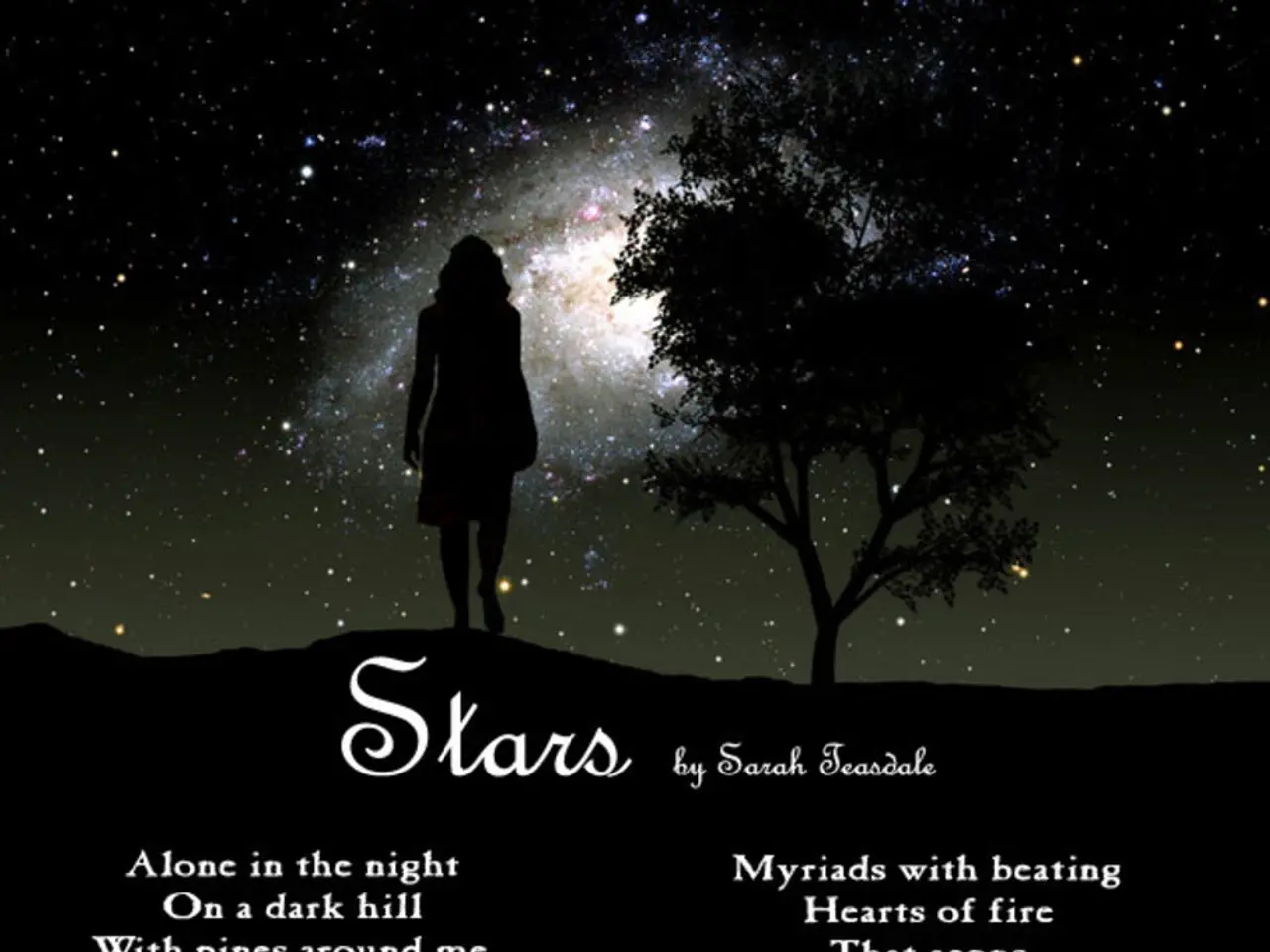Seven Illustrations of the Influence of Silence on Nature Poetry, Stirring Wondrous Awe
In the realm of nature poetry, silence takes on a life of its own, transcending mere absence to become an expressive, textured presence. Poets, such as Gary Snyder and Ted Hughes, skillfully employ this powerful tool to evoke emotional resonance and encourage deeper contemplation.
Gary Snyder's "Riprap" beautifully demonstrates this concept, transforming mountain silence into a form of Buddhist meditation. Each carefully placed word mirrors stones arranged on a hiking trail, creating a meditative rhythm that matches the deliberate pace of mountain walking. In these quiet moments, Snyder invites readers to delve deeper into understanding humanity's relationship with wilderness.
On the other hand, in Ted Hughes's "Hawk Roosting," the hawk's wordless observation from its perch creates a sense of tension and foreboding. The poem's measured cadence mirrors the hawk's patient waiting, turning each pause into potential violence. Hughes uses the hawk's voiceless hunting to demonstrate how nature's silence can intimidate rather than soothe.
Silence, in this context, acts as a contemplative space, a pause or stillness between natural images that invites the reader to slow down and reflect inwardly, deepening emotional engagement with the poem’s themes. It is not emptiness but a palpable quality that "wraps around your shoulders," offering a reprieve from external demands and noise.
Moreover, poets strategically use silence to enhance layered meaning. By incorporating quiet or untranslated moments, they disrupt easy understanding, encouraging readers to dwell on cultural, emotional, or existential complexities, thus enriching resonance. This technique is particularly evident in the works of diasporic poets who embed ancestral words, creating a space for profound meditation on existence, belonging, and our relationship with the natural world.
Finally, silence fosters an intimate atmosphere where private moments and observations in nature become shared emotional experiences, bridging individual feelings with broader human themes such as identity, longing, or memory. This transformation of the personal into the universal is a testament to the transformative power of silence in nature poetry.
Each gap in the text represents a moment of breathing, listening, and being present in the natural world. The sparse language creates a meditative rhythm, inviting readers to engage more deeply, contemplate the poem’s meanings, and experience a resonant emotional stillness. The interplay between sound and stillness helps readers appreciate both the dramatic and peaceful aspects of nature, making every quiet moment a door to deeper understanding and spiritual connection.
- In the realm of fashion-and-beauty, a skillful use of silence can create an aura of mystery and intrigue, inviting viewers to contemplate the deeper meanings behind the design.
- A peaceful home-and-garden can provide a sanctuary from the noise of daily life, offering a space for personal contemplation and self-development through books on philosophy and education-and-self-development.
- Traveling to remote locations can offer opportunities for intimate relationships, as shared experiences in unfamiliar environments foster a deeper understanding and empathy between individuals.
- Silence in entertainment, such as in a tense movie scene or a poignant moment in a play, can elevate the emotional impact, turning each pause into a moment of eager anticipation.




